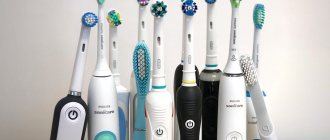Are tampons harmful? Tampons: harm and benefit, tips for choosing, recommendations for use
Small, white and sometimes simply irreplaceable. They say different things about them - some people can’t live and praise them, but for others they have really “annoyed” them, bringing more harm than good. In any case, you should not blindly form an opinion without understanding the issue. “Tampons – harm and benefit?” - This question often interests women.
Why are they treated with prejudice?
These irreplaceable “things” appeared in the 30s of the last century and were like “bombs” consisting of two types of materials. They were very uncomfortable, so they did not inspire admiration among women.
Tampons took on their modern appearance half a century later – in the 80s. This is where the sad story about tampons began. They were created from a synthetic material that turned out to be toxic. Women who tried the products put their lives at risk - the consequences in some cases even reached death. After this, hygiene products of this type began to be viewed with prejudice - history cannot be rewritten.
Times have changed, progress does not stand still. Modern tampons have long posed no threat to women if used correctly. To make sure of this, let’s carefully study their composition.
What is a modern tampon?
Modern products do not pose any danger if the woman is absolutely healthy. If there is a need for use, it is better to throw out old prejudices associated with negative facts from the life of these little things and stock up on a box or two, just in case.
- Tampons in the current understanding are small elongated objects that consist of environmentally friendly substances. The main component of which is cellulose - a product that does not cause any harm;
- This type of sanitary product contains an applicator that allows you to quickly pull out the tampon to replace it. Fears inspired by thoughts that an object is “wandering” in the body are wrong. The vaginal muscles tightly compress it, so no movements occur;
- The tampon absorbs liquid and “adjusts” to the anatomical features of the woman’s vagina. Forget about anything getting in the way when you walk. If you follow the rules of hygiene, there is no fear of any discomfort;
- There are hygiene items of this variety that are suitable even for virgins. During menstruation, the hymen stretches and becomes elastic, so products of minimal sizes are quite suitable if necessary;
- Modern advances do not allow the material to accumulate liquid on top. It is evenly distributed along the edges of the object, without posing a danger to the woman’s health.
Dispelling myths
- The tampon can get lost and harm the body. This is not true, because there is a special cord that you can always pull. It is securely attached so it won't come off. Nothing will penetrate the uterus either, since the passage is too small for this.
- After childbirth, you should only use pads. Tampons do no harm during menstruation after childbirth, but they simply may not cope with the heavy discharge that occurs in women after childbirth.
- If you do not use pads at night, it will harm your body. This is not true, because at night they become a salvation for any woman.
- The period in the vagina will be blocked as blood will not be able to flow out. If the hygiene product absorbs as much blood as it can, it will begin to leak. So the harm of tampons in this situation is clearly exaggerated.
- It can damage the hymen. Research has proven that damaging the hymen with a tampon is only possible if this is done deliberately and persistently, and even then not everyone will succeed. The hymen will not break accidentally .
- You can rub the cervix, causing irritation. Scientific research has confirmed that this is impossible.
Using tampons. How to use tampons for girls and women
Menstruation used to cause a lot of problems for women. Later, thanks to the invention of such special hygiene products as pads and tampons, “critical days” became more comfortable. However, if using the former everything is extremely simple, then questions often arise regarding the use of tampons. To avoid unpleasant consequences and the development of serious diseases such as cervical erosion, it is worth knowing how to use tampons. When used correctly, the hygiene product is absolutely safe for health.
What is a tampon
This is a small “bundle” of compressed cotton and viscose that perfectly absorbs blood during menstruation. The tampon is placed inside the vagina, so that the discharge does not leak out. They will be held back by the sponge-like texture of the material. Are tampons harmful? Many girls are afraid to use them because they are sure that such products interfere with the normal flow of blood. However, studies of well-known brands (Kotex, Tampax, Ob, etc.) prove the opposite. When the cylinder is completely saturated with secretions, moisture begins to flow through it.
Another common myth about the dangers of tampons is the danger they pose to the vaginal flora. Some believe that daily use of such hygiene products is fraught with toxic shock and the development of cervical erosion. The likelihood of such a scenario is extremely low. Research shows that pathologies can occur if you select and insert a tampon incorrectly. As a result, microcracks in the organ mucosa may occur, opening paths for harmful bacteria.
How to choose the right hygiene product
Gynecologists agree that they should give preference to better-known brands of tampons, avoiding “miracle” Chinese remedies. In addition, their price is not inflated compared to goods of unknown origin. The packaging of a quality product contains a detailed description and certification information. Considering the degree of benefit and the low likelihood of harm from tampons, modern girls can safely use them. With proper selection and use, hygiene products will become convenient and indispensable during menstruation.
Tampon sizes
Like pads, tampons vary in size. They are indicated depending on the volume of discharge they are designed for. The level of absorption is indicated on the packaging by the number of droplets. The smallest size is 1-2 drops. Even a teenage girl or a girl with light menstruation can use them. Cotton cylinders of 3 drops or more are the best option for women who produce large quantities of blood. Some brands, for example, Obi, indicate the amount of absorption as follows:
- Mini (recommended for girls with light discharge);
- Normal (suitable for girls with slight/moderate discharge);
- Super (used for heavy menstruation);
- Super plus (the best option for very heavy bleeding).
Many women do not always use the same ones, but purchase several types of tampons at once, using products with the appropriate level of protection during different periods of menstruation. For example, if the first days of menstruation are characterized by heavy discharge, they use tampons with 3-4 drops. Afterwards, when the bleeding is not so strong, girls switch to products with a lower degree of absorption (1-2 drops or Mini).
How to insert a tampon: instructions for use
The question interests many young girls who have recently faced the need to use them. No health problems will arise if the cotton cylinder is used correctly. Menstruation is a natural process, and every woman must decide which hygiene product is best for her. Below are tips on how to use a tampon correctly.
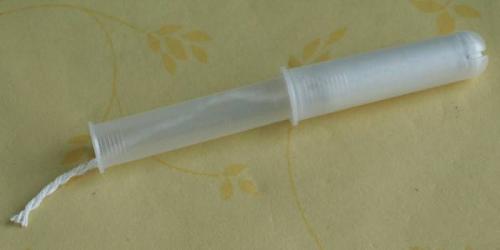
With applicator
- The first thing you need to do is wash your hands with soap. Then choose a comfortable position for yourself to insert the applicator into the vagina. Different girls have their own decisions about tampons and how to insert them correctly. Some squat down, others place one leg on a small hill.
- How to insert a tampon to minimize discomfort? To do this, try to relax your stomach as much as possible. Grip the applicator with two fingers where the wide part begins to taper. Gently push the free end of the tampon into the vagina.
- How deep to insert? It should be inserted until the fingers holding the cylinder touch the perineum. Then press your index finger on the free narrow edge of the applicator, pushing the tampon completely inside the wide part. She is already in the vagina. You will place the hygiene product at the desired depth and minimize the risk of it falling out.
- The final stage is removing the applicator. The string that remains outside will help you pull out the tampon to replace it with a new one.
What is more hygienic: tampons or pads? What is better to use - tampons or pads?
During menstrual periods, women can use various intimate hygiene products designed to absorb menstrual flow. Some of them are inserted into the vagina, others are glued to underwear. To figure out which is better, tampons or pads, and choose the appropriate option, you need to study all their advantages and disadvantages.
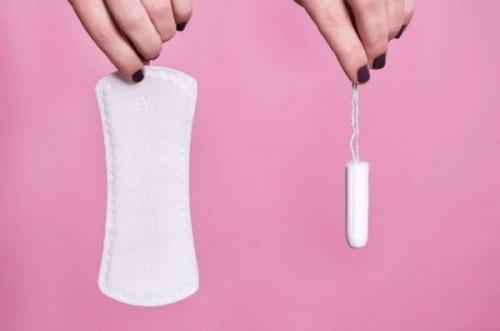
Gaskets
Pads and tampons do the same thing - absorb menstrual flow and prevent leakage. In addition, they allow the skin to breathe.
However, pads are different from tampons. These intimate hygiene products are not inserted into the vagina. They can simply be glued to your underwear. The woman does not feel any discomfort, and her critical days are much easier due to this.
There are certain advantages and disadvantages of different ones that must be taken into account when choosing a hygiene product.
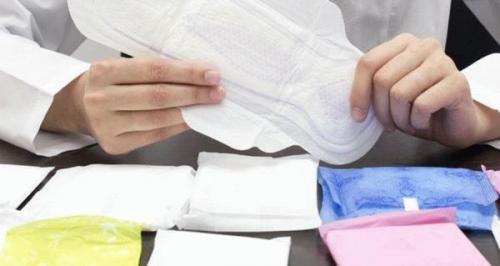
pros
Gaskets have a huge number of advantages. Among the main ones are the following:
- are offered in a wide range of configurations and sizes;
- simple and easy to use;
- can be used at night;
- characterized by good ability to absorb menstruation;
- differ in practicality. Each product is wrapped in a separate envelope, so there is no need to carry the entire package with you at all times;
- after use, they are rolled into a tube and discreetly thrown away;
- mask the smell of menstrual bleeding;
- have a low cost;
- do not restrict movements and prevent leakage.
Minuses
No matter how large the list of advantages of these products is, they also have disadvantages:
- when wearing excessively tight clothes, the contours of the pads become noticeable;
- Often, when using this hygiene item, a greenhouse effect occurs;
- when the gasket interacts with air, an unpleasant odor begins to be felt;
- not excluded when using products with aromatic additives;
- if the product is chosen incorrectly, leakage and stains may appear on clothing;
- cannot be used when visiting the pool.

Tampons
To understand what is better to use, tampons or pads, you need to consider that modern hygiene products have both advantages and disadvantages. Only after carefully studying them can you choose certain products.
pros
Many women are of the opinion that it is better to use tampons instead of pads. This is due to the fact that these intimate hygiene products have a number of advantages:
- invisible under clothes;
- do not leak;
- the skin is not irritated;
- can be chosen to ensure its correct administration;
- allowed. There is only one limitation - you need to be in the water for no more than twenty minutes, immediately after leaving you need to replace the hygiene item.
Minuses
The disadvantages of tampons are as follows:
- the process of introducing a hygiene product at first causes difficulties;
- it is possible that it may occur during excessively active movements;
- The product can dry out the mucous membrane with constant use. For this reason, there is a risk of infectious disease of the genital organs;
- by limiting the access of oxygen, an environment favorable for the development of bacteria is created;
- It is not recommended to use tampons at night;
- need to be replaced every 2–3 hours;
- there is a risk of toxic shock.
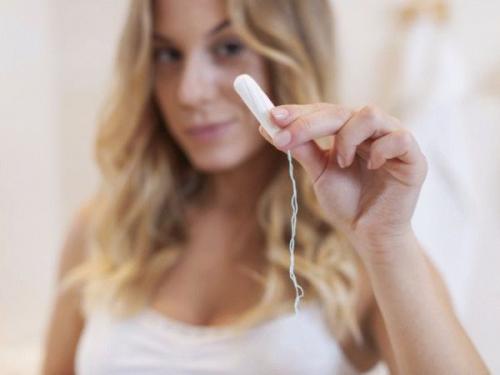
Contraindications
In certain situations, the use of a tampon is strongly discouraged. In the presence of female inflammatory diseases - a categorical prohibition. Failure to comply with this requirement will result in serious complications. In addition, there are other contraindications:
- allergic reaction to components of hygiene products;
- the use of local drugs in the treatment of vaginal pathologies (suppositories, tablets, ointments);
- diseases of the genitourinary system of various nature;
- the first three months after birth;
- dryness of the vaginal mucous membranes.
It is impossible to say unequivocally what is better to use, pads or tampons, for girls who have not yet had experience of intimate intimacy. Nevertheless, manufacturers claim that such products are absolutely safe for virgins.
Tampons are manufactured in small sizes to ensure minimal risk of damage to the hymen. Therefore, this contraindication is considered conditional. Representatives of the fairer sex make the decision to use modern hygiene products independently.
conclusions
There is no consensus on which is better, a tampon or a pad, among both doctors and women. Each product has both advantages and disadvantages.
The inconvenience of using tampons lies primarily in the fact that they are replaced every 2–3 hours. It is impossible to visit the beach or pool with external hygiene products. Therefore, during menstrual periods, it is recommended to use both types of products: pads are used at night, at home and in everyday life, and tampons are inserted if necessary.
Where does the real harm lie?
This is not a panacea, so it’s worth talking in detail about the dangers of tampons for women during menstruation. Why has this topic become relevant only now, since tampons have been used for thousands of years? This product has become widespread and accessible to everyone. In addition, over a couple of decades, production technologies have undergone significant changes, and the chemical industry helps reduce the cost of any product by replacing natural elements.
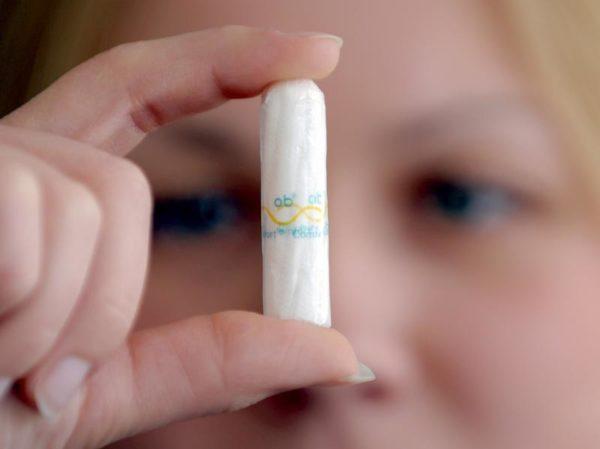
The first danger lies in the materials from which hygiene products are made.
If cotton is used, then there is nothing to fear. Although opponents of genetic modification claim that the producers do not use natural cotton. It is believed that genetically modified cotton reduces the susceptibility of a woman's reproductive organs to antibiotics. As a result, treatment of bacterial diseases becomes less effective.
Viscose, used for better absorption of menstruation, contains many chemical compounds. It is difficult to predict what reaction might be to such components.
When dioxin is included in a gynecological hygiene product, the question of whether tampons are harmful for women during menstruation should disappear on its own. Dioxin is used to give the product a white color, because then it sells better.
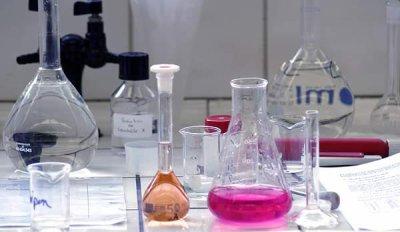
Dioxins have a carcinogenic effect on the body and are also responsible for artificial suppression of the immune system. They accumulate in a woman’s body, because they are extremely difficult to break down. It is believed that one of the causes of endometriosis is the use of dioxins. The lethal dose of the substance is 10-6 g (one millionth) per 1 kg of weight.
Menstrual blood accumulates in the tampon and is found in the girl’s body. Various microbes and bacteria begin to multiply in the blood, which is not very good.
Harm of tampons forum. Tampons - how they are
A lot of research has been conducted on the topic of identifying the potential danger of tampons, both paid for by manufacturing companies and independent, including commissioned by regulatory and certification bodies in Russia and abroad. Ultimately it was proven that when used correctly:
- tampons do not interfere with the outflow of menstrual blood and cannot create a plug effect - when the tampon is completely saturated, blood seeps through it and flows out freely;
- tampons do not cause changes in the vaginal microflora and an increase in the number of bacteria - changes in the composition of the vaginal environment are associated with menstruation itself; the composition of the tampon (cotton, viscose or a combination of both) also does not affect the vaginal microflora;
- tampons do not lead to rupture of the hymen - the hole for the outflow of blood in it is large enough (about 1.5 cm) and the hymen itself is quite elastic during menstruation. By absorbing moisture, the tampon mainly increases in length and, when removed, also cannot lead to loss of virginity;
- tampons do not cause “bad” sexual habits (if inserted correctly, the tampon is located in the receptor-poor area of the vagina and is not felt at all, i.e. physically cannot become a provocateur of erotic sensations);
- tampons do not cause endometriosis, cervical erosion, infertility and do not affect the duration of the cycle and menstruation itself - firstly, the vagina is highly adaptable and can “get along” even with a penis, the size of which is at least several times larger than the size of a tampon; secondly, the tampon does not come into direct contact with the uterus, which also adapts well and is quite well protected; thirdly, the duration of the cycle depends on the woman’s physiology, her hormonal levels, body structure, health status, weight and other internal factors, and not at all on whether a small cotton ball is inserted into the vagina for several hours;
- tampons cannot get into the uterus themselves, get stuck in the body forever or “get lost” - with a slight muscular effort (preferably while sitting on the toilet), a tampon inserted too deeply (if it is soaked in discharge) will come out on its own, even if its lace comes off, which , by the way, is also practically impossible, because The lace can withstand loads of up to 5 kg and is firmly sewn into the tampon along its entire length.
Pros and cons

Let's take a closer look at the pros and cons of tampons in order to understand the existing risks. Let's start with the positive aspects.
- Does not cause discomfort during insertion and removal.
- Hides under clothes and does not stick out like a pad. Can be worn with any clothes.
- Movements are not restricted in any way; you can sit in any position and run.
- Compact and takes up little space in your purse.
- Menstrual flow does not come out, but is absorbed by cotton or viscose. Even when expanding due to discharge, it does not cause discomfort.
- Blood does not come into contact with air, so the characteristic odor does not appear.
The harm and benefits of tampons are very ambiguous concepts, because they depend on many factors. Often the same hygiene products can have different effects on two girls.
Now let's look at some negative points:
- not recommended for use by girls in the first year of menstruation;
- Toxic substances may be used in the composition of the hygiene product;
- There are cases of toxic shock syndrome;
- an incorrectly selected tampon for menstruation is dangerous due to problems with the absorption of discharge;
- if you forget to change your hygiene product on time (women sometimes don’t notice it and forget), then this is fraught with negative consequences for the body.
